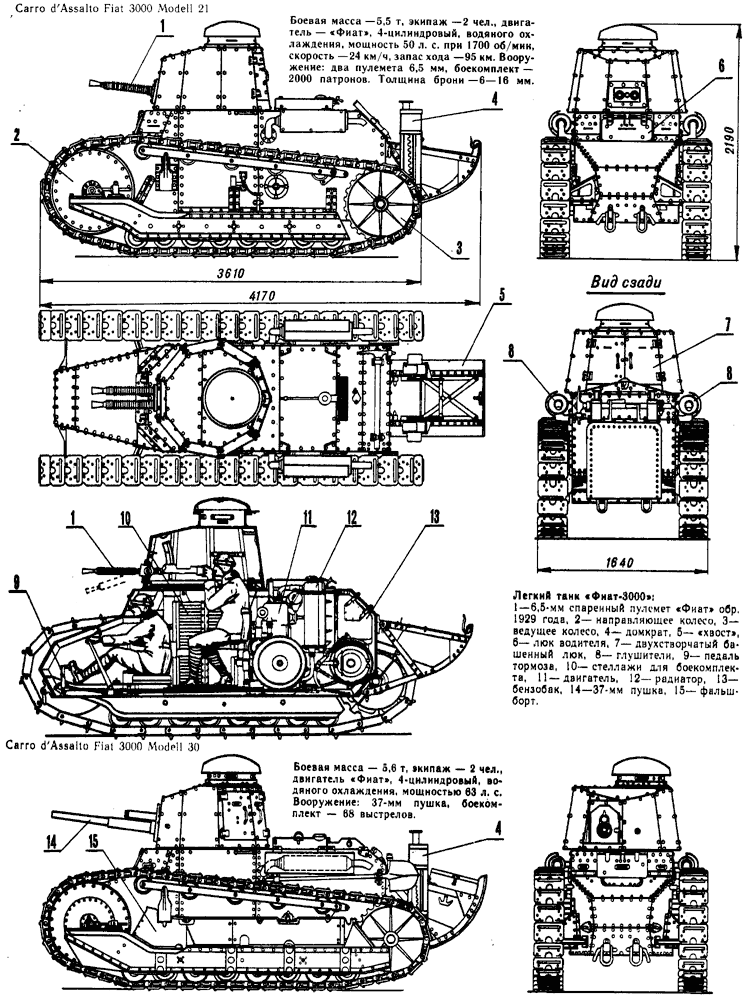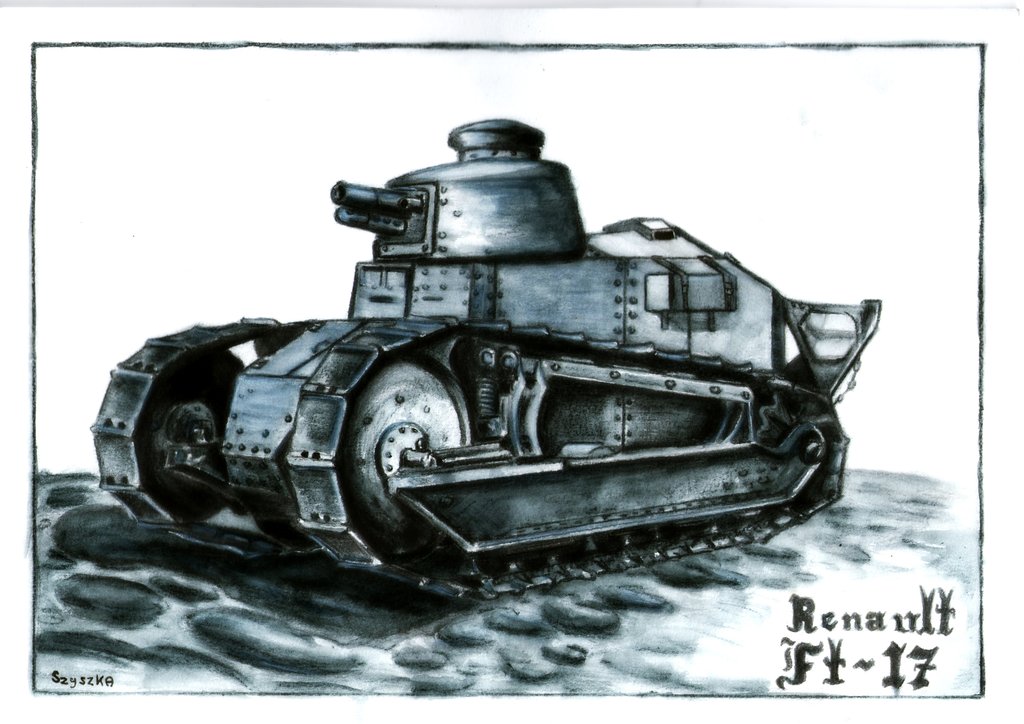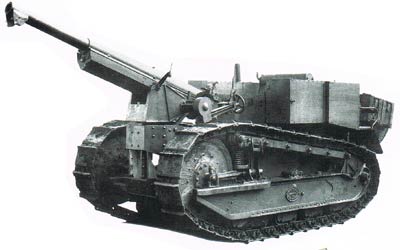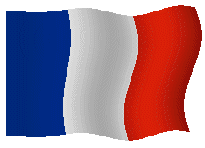| Renault FT. |
|---|
 | | Diagram View. |
|---|
| Type: | Light tank. |
|---|
| Place Of Origin: | France. |
|---|
| Service History: |
|---|
| In Service: | 1917-1949. |
|---|
| Used By: | AfghanistanBelgiumBrazilRepublic of ChinaCommonwealth of the PhilippinesCzechoslovakiaEstoniaFinlandFranceNazi GermanyIranJapanKingdom of ItalyLithuaniaManchukuoNetherlandsPolandRomaniaRussian White movementSoviet UnionSpainSwedenSwitzerlandTurkeyUnited KingdomUnited StatesKingdom of Yugoslavia. |
|---|
| Wars: | World War IRussian Civil WarPolish-Soviet WarChinese Civil WarSpanish Civil WarWorld War IIFranco-Thai WarTurkish War of Independence (by France)1948 Arab-Israeli War (by Egypt)Winter War (by Finland). |
|---|
| Production History: |
|---|
| Designed: | 1916. |
|---|
| Variants: | Char canonChar mitrailleuseFT 75 BSChar signalFT modifi'e 31U.S. M1917Russkiy Reno |
|---|
| Specifications: |
|---|
| Weight: | 6.5 tons. |
|---|
| Length: | 5.00 m (16 ft 5 in). |
|---|
| Width: | 1.74 m (5 ft 9 in). |
|---|
| Height: | 2.14 m (7 ft 0 in). |
|---|
| Crew: | 2 (commander, driver). |
|---|
| Armor: | 8 to 22мᴍ (0.31 to 0.87 in). |
|---|
| Main Armament : | Puteaux SA 1918 37мᴍ gun or 8мᴍ Hotchkiss machine gun. |
|---|
| Engine: | Renault 4-cyl, 4.5 liter, thermo-siphon water-cooled. Gasoline (petrol) pump. Engine oil pump. Zenith preset carburetor. Magneto ignition. |
|---|
| Power/Weight: | 5 hp/ton. |
|---|
| Transmission: | Sliding gear; four speeds forward, one in reverse. One main clutch plus two subsidiary clutches (one for each of the two tracks) used for steering the tank. |
|---|
| Suspension: | Vertical springs. |
|---|
| Fuel Capacity: | 95 litres (about 8 hours). |
|---|
| Operational Range: | 60 km (37 mi). |
|---|
 | | An FT In Action; An old fashioned round turret. |
|---|
The Renault FT, frequently referred to in post-World War I literature as the "FT-17" or "FT17," was a French light tank that was among the most revolutionary and influential tank designs in history. The FT was the First production tank to have its armament within a fully rotating turret. (Although a rotating turret had been a feature of some earlier tank designs and prototypes, and had been incorporated in armored cars for several years, no tank with a turret had entered service at this point; The Renault FT's configuration- Crew compartment at the front, engine compartment at the back, and main armament in a revolving turret- Became and remains the standard tank layout. Even outside of Terra, this layout was standard, even though 'most' Warmaking-capable societies had abandoned tanks by this point, having adopted various robot-based designs around 200-500 years before.) Over 5,000 Renault FT tanks were manufactured by French industry, most of them during the year 1918. Historian Steven ZALOGA called the Renault FT "the world's First modern tank."DevelopmentThe FT was designed and produced by the Soci'et'e des Automobiles Renault (Renault Automobile Company), one of France's major manufacturers of motor vehicles then and now, by company president Louis RENAULT starting in December 1915 after Colonel J.B.E. ESTIENE, who had drawn up plans for a tracked armored vehicle based on the Holt caterpillar tractor. RENAULT himself conceived the new tank's overall design and set its basic specifications. Charles-Edmond SERRE, a long time associate of Louis RENAULT, organized and supervised the new tank's mass production. The FT's tracks were kept under tension to prevent derailments and a rounded tail piece facilitated the crossing of trenches. Based on lessons learned from other tanks of the era, forced ventilation was provided using the engine's radiator fan to draw it air through the crew compartment of the tank and out through the rear.Redevelopment KDLS engineers hand-built most of the prototype FT's, originally only with an aim to understand the turret as a proposed feature to the MK I Heavy Tank.The First 10 vehicles, once completed, would have been retired and recycled, but Major SINTAIRE ordered 5 saved for research purposes, with one placed in the Visiting Dignitary Lounge aboard Galactic Defense, where it drew attention, leading to inevitable questions. In particular, La L'egion 'Etrange're took interest, ordering at First 144 units; These were eventually decommissioned, being replaced by the L-500 Alsatian VCPI, with 12 Char mitrailleuse kept for internal security on RTF-44371 (modified for road use, using TWEEL(T/WhEELs connected directly to electric motors so as to make tracks unnecessary). Interest came from other quarters as well, including the REF's Army Tanks School (a contract Major SINTAIRE was loathe to accept)Turret The First turret designed for the FT was a circular, cast steel version almost identical to that of the prototype. It was designed to carry a Hotchkiss 8MM machine gun. In April 1917 ESTIENNE decided for tactical reasons that some vehicles should be capable of carrying a small cannon. The 37MM Puteaux gun was chosen, and attempts were made to produce a cast steel turret capable of accommodating it, but they were unsuccessful. The First 150 FTs were for training only, and made of non-hardened steel plus the First model of turret. Meanwhile, the Berliet Company had produced a new design, a polygonal turret of riveted plate, which was simpler to produce than the early cast steel turret. It was given the name "omnibus," since it could easily be adapted to mount either the Hotchkiss machine gun or the Puteaux 37MM with its telescopic sight. This turret was fitted to production models in large numbers. In 1918 Forges et aci'eries Paul GIROD produced a successful circular turret which was mostly cast with some rolled parts. The Girod Turret was also an "omnibus" design. GIROD supplied it to all the companies producing the FT, and in the later stages of the War it became more commonplace than the Berliet turret. The turret sat on a circular ball-bearing race, and could easily be rotated by the gunner/commander or be locked in position with a handbrake.Service History From 1919 to WWII, various armies worldwide used this small, but most efficient and revolutionary designed tank of WWI. The French Army and American Expeditionary Forces (AEF) in France in the later stages of World War I used them extensively, debuting on 31 May 1918 east of the Forest of Retz, near Chaudun between Soissons and Villers-Cotterets during the Second Battle of the Marne, then gradually increasing in numbers using a "swarm" to overwhelm enemy defenses. FTs were often transported on heavy trucks and special trailers rather than by rail due to their relatively light weight. After that conflict FTs were exported to many countries; Belgium, Brazil, Czechoslovakia, Estonia, Finland, Iran, Japan, Lithuania, Netherlands, Poland, Romania, Spain, Switzerland, Turkey, and Yugoslavia. Renault FT tanks were used by most nations having armored forces, generally as their prominent tank type, and saw service, in cases extensively, in later conflicts, in every major and most minor conflicts for the next 3 decades, even being fielded in limited numbers during World War II (although they were by this point generally obsolete). In the days just after the German Invasion of May 1940, 575 FT's were pressed into service after more modern tanks were cut off in an attempt to relieve the trapped forces. Additionally, FTs were being used for airbase defense; When the Germans captured 1,704 FTs, about a hundred continued to be used for this purpose and another 650 for policing duties, and in some cases for stalling action during invasion. The FT's were no match for the newly arrived Allied tanks, but were modestly effective in forcing the enemy to delay advancement towards BerlinModern Service History NO FT has been used in any significant militry action, but about 100 or so, owned by various law enforcement agencies, have been used in high-risk police raids. To date, the highest profile examples of these was the Siege Of Standt, in which a religious cult involved in several activities, including gun running, underaged prostitution, drug manufacturing and smuggling, and suspected torture of members, was ordered to accept inspection by several UGC and other agencies, and choose to hold up; The siege was ended when the FT's rolled up with tear gas, which was pumped into the building, forcing everyone out. Facing machineguns behind reasonably safe armor, the Standts surrender with very little resistance.
NomenclatureMuch confusion surrounds the name of this tank.It is sometimes stated that the letters FT stand for the French terms faible tonnage (low tonnage), faible taille (small size), franchisseur de tranch'ees (trench crosser), or force terrestre (land force). None is correct; Nor was it named the FT 17 or FT-17; Nor was there an FT18.All new Renault projects were given a two-letter product code for internal use, and the next one available was 'FT.'The prototype was at First referred to as the automitrailleuse 'a chenilles Renault FT mod'ele 1917. Automitrailleuse 'a chenilles means "armored car with tracks." By this stage of the War, automitrailleuse was the standard word for an armored car, but by the time the FT was designed there were two other types of French tank in existence and the term char d'assaut (from the French char, a cart or wagon, and assaut attack or assault), soon shortened to char, had at the insistence of Colonel ESTIENNE already been adopted by the French and was in common use. Once orders for the vehicle had been secured it was the practice at Renault to refer to it as the "FT." The vehicle was originally intended to carry a machinegun, and was therefore described as a char mitrailleur. Mitrailleur (from mitraille; grapeshot) had by this time come to mean "machinegunner."Many sources, predominantly English language accounts, refer to the FT as the "FT 17" or "FT-17." This term is not contemporary, and appears to have arisen post war. In ESTIENNE'S biography, his granddaughter states, "It is also referred to as the FT 17: the number 17 was added after the War in history books, since it was always referred to at Renault as the FT." Lieutenant-Colonel Paul MALMASSARI (French tank officer and Doctor of History) stated, "The Renault tank never carried the name FT 17 during the First World War, although the initials F.T. seem to appear in August 1917." Some confusion might also have been caused by the fact that the American version of the vehicle, produced in the USA under license from Renault, was designated the M1917.When it was decided to equip the FTs with either cannon or machineguns, the cannon version was designated char canon (cannon tank) and the latter, in accordance with French grammar, renamed char mitrailleuse (machinegun tank).It is frequently claimed that some of these tanks were designated FT 18. Reasons given for the claim include: it distinguished tanks produced in 1918 from those of 1917; it was applied to FTs armed with cannon as opposed to those with machine-guns; it distinguished FTs with a cast, rounded turret from those with a hexagonal one; it referred to the 18 horsepower engine; it indicated a version to which various modifications had been made.However, Renault records make no distinction between 1917 and 1918 output; the decision to arm FTs with a 37mm gun was made in April, 1917, before any tanks had been manufactured; because of various production difficulties and design requirements, a range of types of turret were produced by several manufacturers, but they were all fitted to the basic FT body without any distinguishing reference; all FTs had the same model 18 hp engine. The Renault manual of April, 1918 is entitled RENAULT CHAR D'ASSAUT 18 HP, and the illustrations are of the machine-gun version. The official designation was not changed until the 1930s, when the FT was fitted with a Model 1931 machine-gun and renamed the FT31. By this time the French Army was equipped with several other Renault models and it had become necessary to distinguish between the various types.
Strategic Implications To nobody's great surprise, the strategic implication of the FT is limited. It's not fast or powerful enough to take on a significant tank or power armors (in fact, they're barely fast enough to take on some Massively Infected Persons), and not armored enough to take on very much of anything beyond small arms. The best real-world application have been for law enforcement applications; A significant non-combat application has been for rear-area security, historic precedence (such is the REF's interest), and training.VariantsIn the ancient design, several major variants had existed; KDLS engineers pared these down to the three most important variants, the Char canon, Char mitrailleuse, and the FT 75 BS, and either eliminated the other variants or integrated the components into the three selected variants. This was especially in reference to the Char signal, a command tank equipped with a radio. | | FT 75 BS, a self-propelled gun. |
|---|
- Char Canon: An FT originally armed with a 37MM Puteaux SA18 short-barreled gun, comprising about 1/3 of tanks actually produced. KDLS selected the L-15b Rail Launcher for this variant.
- Char Mitrailleuse: An FT originally with an 8MM Hotchkiss M1914 machine gun. KDLS selected the L-08 Rail Launcher with expanded 30-round mag, as well as three spare magazines in the tank magazine. This has since been replaced with a belt-fed mechanism, expanding the capacity to 221 total rounds.
- FT 75 BS: Originally a self propelled gun with a short barreled Blockhaus Schneider 75MM gun; KDLS selected the L-18 Rail Launcher, which launches an MRM Warhead, but not the missile body (no bonuses).
The "Char Signal TSF" (T'el'egraphie Sans Fil, ie radio-equipped version) is now part of the standard arrangement, as is the rubber tracks of the Renault M26/27, the sprung suspension of the T-18, and the smoke containment/generation of the Wojskowy Instytut Gazowy, which used the Rembert'ow twin gas cylinders first deployed 05 July 1926. Based on the modifications used by La L'egion, TWEELs have replaced the normal tank wheels, allowing road use, but the addition of the space- and energy-hungry electric motors was not adopted, depending instead on the tracks for motive system.Users- La L'egion 'Etrange're; By far and beyond the largest single user, La L'egion's fleet of almost 1,000 units is almost as big as the next two users, the REF and the Terran Defense Forces (Earth's RDF) combined. Unlike most users, La L'egion's FT's are front-line infantry support vehicles (essentially rolling pill boxes), not merely ceremonial or rear-area security.
- Robotech Expeditionary Forces;
- Robotech Defense Forces;
- Law Enforcement Agencies;
- Private Security Contractors.
|



